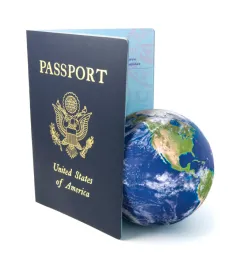Although Immigration and Customs Enforcement (ICE) has recently eased off of its record pace for commencing new I-9 inspections, employers can take no comfort. ICE continues to use these inspections as a key enforcement tool to build a “culture of compliance” among employers, as shown by a recent decision issued by an administrative law judge (ALJ) in the Office of the Chief Administrative Hearing Officer. This decision demonstrates the need to make I-9 compliance an important part of your normal business operations and to train employees to handle I-9 compliance duties properly.
Best Practice
It is often said that “the best defense is a good offense,” and here, a good offense is to make I-9 compliance an important part of the normal business operations. The I-9 function is a substantive task, not an administrative one. Employees must be properly trained before they are permitted to handle any I-9 compliance duties. The I-9 compliance program should focus on the time of hire, reverification (if applicable), and periodic internal audits. Finally, the I-9 compliance efforts should commence well before ICE arrives with the Notice of Inspection. To do otherwise may be quite costly.
In the recent decision, ICE charged the employer with 818 violations and sought fines of over $812,000. The ALJ upheld the vast majority of the charged violations and agreed with ICE that high fines would provide the “additional motivation” needed by this employer to comply with the federal I-9 rules. The ALJ imposed fines of over $605,000.
The employer’s violations included:
-
Failure to produce Form I-9s for a handful of employees.
-
Failure to present several Form I-9s within the approximately two-week period set by ICE, which included a brief extension of time.
-
Failure to ensure that section 1 was signed, that a box was checked to state the basis for employment authorization, and/or that the alien number was stated when “permanent resident” or “alien authorized to work” was selected in section 1.
-
Failure to complete section 2 properly for many of the employees. These violations included no signature by the employer swearing that it had completed the verification, no entries under List A OR under List B and List C, and/or no expiration dates where applicable.
-
Failure to complete a timely reverification in section 3 of Form I-9.
The employer was a medium-size company engaged in event design and productions such as parades, trade shows, and exhibitions, and it employed a mix of nonunion and union employees. As to the nonunion employees, the employer treated the I-9 completion as an administrative task and did not have trained staff assigned to the I-9 duties. There were questions such as whether the employer backdated information on the I-9s, reviewed the documents presented, and otherwise followed the I-9 rules.
As to the employees coming from the hiring hall, the company relied heavily on the union to see that section 1, and even parts of section 2 of the Form I-9, were completed. The company also acquiesced in the union’s use of a combination form to gather information required by the Form I-9, the IRS Form W-4, and the union dues authorization. This action alone was a serious violation. An employer cannot modify the Department of Homeland Security’s Form I-9.ICE could have treated this employer as having no Form I-9 for union employees, which would have driven the fines even higher. Instead, ICE charged that where this combination form was used, the Form I-9 were not properly completed. This was still very serious, but a step away from the ultimate sin of no form at all. There were other questions, such as whether the employer backdated information on the I-9s, reviewed documents presented, and otherwise followed the I-9 rules.
ICE sought fines against the employer near the top of the scale based on the number and seriousness of the violations. While the employer requested a reduction in the fine amount based on its good-faith cooperation in the investigation and the government’s delays, the ALJ determined that these arguments were insufficient to overcome the employer’s failure to make reasonable efforts to comply with the I-9 requirements before the government investigation began — particularly where the employer’s violations were “among the most serious of possible violations.” Because I-9 fines are imposed to “have a deterrent effect on an employer’s behavior and not merely be a cost of doing business,” the ALJ determined that high fines were necessary to give the employer “additional motivation to conform its employer verification processes to what the law requires.”




 />i
/>i

